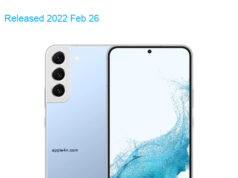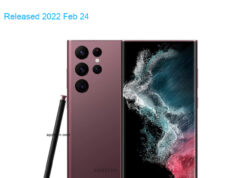| Brand | Lenovo |
| Model | Tab P11 2nd Gen 2022 Standard Edition WiFi TB350FU |
| Released | 2022 Dec |
| Announced | 2022 Aug 2 |
| Hardware Designer | Lenovo |
| Manufacturer | Lenovo |
| Codename | Lenovo TB350 |
| OEM ID | ZABF0015CZ |
| General Extras | Haptic touch feedback |
| Device Category | Tablet |
| Width | 269.1 mm |
| Height | 169.4 mm |
| Depth | 7.4 mm |
| Dimensions | 10.59×6.67×0.29 inches |
| Mass | 520 g |
| Platform | Android |
| Operating System | Google Android 12 (S) |
| CPU Clock | 2200 MHz |
| CPU | MediaTek Helio G99 MT6789, 2022, 64 bit, octa-core, 6 nm, ARM Mali-G57 GPU |
| RAM Type | LPDDR4x SDRAM |
| RAM Capacity (converted) | 4 GiB RAM |
| Non-volatile Memory Interface | UFS 2.2 |
| Non-volatile Memory Capacity (converted) | 128 GB ROM |
| Display Diagonal | 292 mm |
| Resolution | 2000×1200 |
| Horizontal Full Bezel Width | 18.71 mm |
| Display Area Utilization | 82.5% |
| Pixel Density | 203 PPI |
| Display Type | Color IPS TFT LCD display |
| Number of Display Scales | 16.8M |
| Display Refresh Rate | 120 Hz |
| Scratch Resistant Screen | Gorilla Glass 3 |
| Graphical Controller | ARM Mali-G57MP2 |
| A/V Out | No |
| Microphone(s) | stereo |
| Loudspeaker(s): | 4 |
| Audio Output: | 3.5mm |
| Supported Cellular Bands | No |
| Complementary Phone Services | Vibrate |
| Sec. Supported Cellular Networks: | No |
| Touchscreen Type | Capacitive multi-touch screen |
| Keyboard | Attachable QWERTY |
| Expansion Interfaces | TransFlash , microSD , microSDHC , microSDXC |
| USB | USB 2.0 |
| USB Services | USB charging , USB fast charging , USB Host , USB OTG 1.3 , USB PD |
| USB Connector | USB C reversible |
| Max. Charging Power | 20.0 W |
| Bluetooth | Bluetooth 5.2 |
| Wireless LAN | 802.11a , 802.11b , 802.11g , 802.11n , 802.11ac , 802.11ax |
| Wireless Services | Wi-Fi Direct , WiDi |
| FM Radio Receiver | No |
| Camera Placement | Rear |
| Camera Image Sensor | CMOS |
| Number of effective pixels | 13.0 MP camera |
| Aperture (W) | f/2.40 |
| Zoom | 1.0 x optical zoom |
| Focus | CD AF |
| Video Recording | 1920×1080 pixel |
| Flash | single LED |
| Camera Extra Functions | HDR photo , Panorama Photo |
| Aux. Camera Image Sensor | No |
| Aux. 2 Camera Image Sensor | No |
| Aux. 3 Camera Image Sensor | No |
| Aux. 4 Camera Image Sensor | No |
| Secondary Camera Placement | Front |
| Secondary Camera Sensor | CMOS |
| Secondary Camera Number of pixels | 8.0 MP sec. cam |
| Secondary Aperture (W) | f/2.00 |
| Secondary Video Recording | 1920×1080 pixel |
| Sec. Aux. Cam. Image Sensor | No |
| Built-in accelerometer | Yes |
| Built-in gyroscope | Yes |
| Additional sensors | Hall , L sensor , P sensor |
| Protection from solid materials | 5 Protected against dust with limited ingress |
| Protection from liquids | 2 Protected against direct sprays up to 15 degrees from the vertical |
| Battery | Li-ion polymer (LiPo) |
| Market Countries | Armenia , Australia , Azerbaijan , Austria , Belarus , Belgium , Bulgaria , Canada , Cyprus , Croatia , Czech , Denmark , Estonia , Finland , France , Germany , Greece , HK , Hungary , Ireland , Israel , Italy , Latvia , Lithuania , Malaysia , Mexico , Netherlands , Norway , Poland , Portugal , Russia , Romania , Serbia , Slovakia , Singapore , Slovenia , Spain , Switzerland , Turkey , UAE , UK , USA |
| Market Regions | Asia , Eastern Europe , Europe , Middle East , North America , Southeast Asia , Western Europe |
| Added | 2025-01-31 |
Specifications data description of this 📱Lenovo Tab P11 2nd Gen 2022 Standard Edition WiFi TB350FU📱
Title: Lenovo Tab P11 2nd Gen 2022 Standard Edition WiFi TB350FU: A Comprehensive Specification Guide 🌐
Introduction:
Welcome to our comprehensive guide for the Lenovo Tab P11 2nd Gen 2022 Standard Edition WiFi TB350FU. This tablet offers a great balance of performance, portability, and functionality, making it an excellent choice for both personal and professional use. In this post, we will provide you with an in-depth look at the device’s specifications, so you can make an informed decision before purchasing.
Lineup:
The Lenovo Tab P11 2nd Gen is part of Lenovo’s popular tablet lineup, offering a variety of models and configurations to suit different user needs. The Standard Edition WiFi TB350FU model provides a great balance of features and performance at an affordable price point.
Design:
The Lenovo Tab P11 2nd Gen WiFi TB350FU boasts a sleek, modern design with a robust and durable build. It features an 11-inch IPS display with a resolution of 2000 x 1200 pixels, providing vibrant colors and sharp visuals for all your entertainment needs 🌈. The tablet’s body weighs just 485g, making it easy to carry around, and its dimensions of 257.2 x 161.8 x 7.9 mm ensure a comfortable grip 🏋️.
Specifications:
* LAUNCH📅: 2022
* 🛠️ OS: Android 11
* 🚀 Chipset: Qualcomm Snapdragon 662
* 💪 CPU: Octa-core (4×2.0 GHz Kryo 260 Gold & 4×1.8 GHz Kryo 260 Silver)
* 🎮 GPU: Adreno 610
* 🧠 MEMORY: 4 GB RAM, 64 GB internal storage (expandable up to 1 TB via microSD card) 🗂️
* 📷 CAMERA: 8 MP rear camera, 5 MP front camera 🎥
* 🔈 SOUND: Dual speakers with Dolby Atmos support 🎵
* 📡 COMMS: Wi-Fi 802.11 a/b/g/n/ac, dual-band, Wi-Fi Direct, hotspot; Bluetooth 5.0, A2DP, LE
* 💡 FEATURES: Accelerometer, gyro, proximity, compass 🎁
* 🔋 BATTERY: 7,700mAh (typical), up to 15 hours of usage 🔌
Conclusion:
With its powerful hardware, stunning display, and sleek design, the Lenovo Tab P11 2nd Gen 2022 Standard Edition WiFi TB350FU offers a versatile and feature-rich tablet experience. Whether you’re looking for a device for work, entertainment, or both, this tablet has you covered.
We invite you to leave a comment below and share your thoughts on the Lenovo Tab P11 2nd Gen WiFi TB350FU. We’d love to hear from you!
📫 Don’t forget to sign up for our newsletter, where we share the latest tech news, reviews, and deals directly in your inbox!








